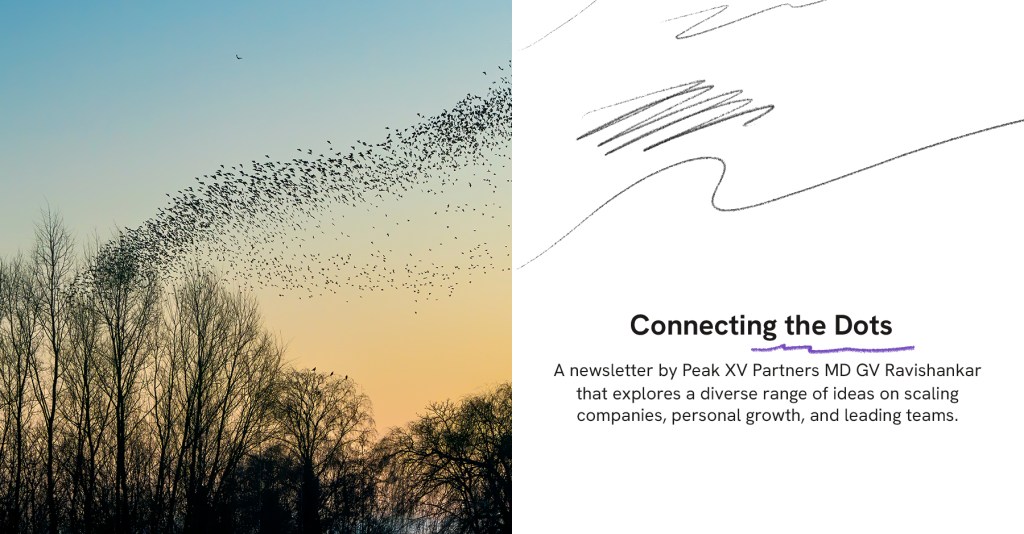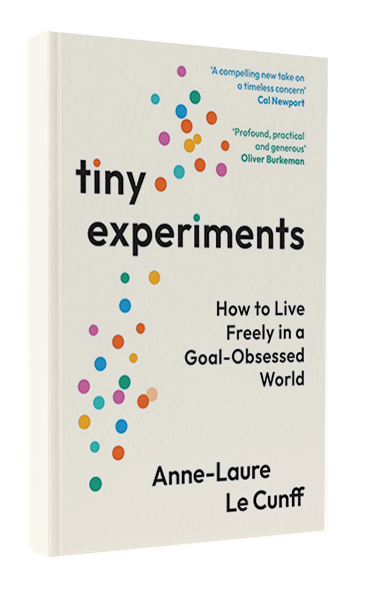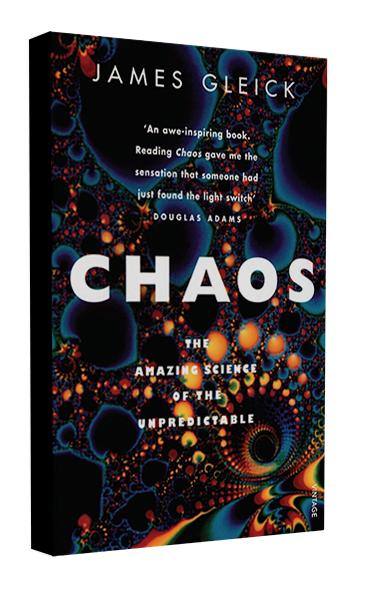When the Map Becomes the Territory
ByGV Ravishankar
PublishedJune 4, 2025
Maps are valuable. But they are simplifications. They are partial representations of reality, not reality itself.
We start with a test this time. Ready? Now take a look at the two orange circles:
Which one of them is bigger? The one on the right? Most people looking at this image will say the right circle is bigger. But it’s not. Both circles are exactly the same size. Now see the image again, still not convinced? That’s because of how we are trained to see the world!
This is known as the Ebbinghaus illusion, a visual trick where the context around an object distorts our perception of it. The larger surrounding circles make the central one appear smaller, while the smaller outer circles make the same central circle appear bigger.
But here’s what’s fascinating: not everyone is fooled. Researchers have found that certain remote communities – like the San people of the Kalahari or tribes in Papua New Guinea or Himba children in Namibia – tend to see the circles accurately, as the same size. Unlike most of us raised in industrialized societies, they aren’t conditioned by the visual assumptions that skew perception.
In a way, they’re seeing the territory. The rest of us are seeing the map. Understanding the difference between the two and acting accordingly is the theme of this month’s newsletter.
Why We Reach for Maps
We all use maps. Not just the paper kind, but also conceptual ones – models, frameworks, forecasts, and heuristics that help us make sense of a messy, unpredictable world. We like structure and we actively simplify the messiness of this world through structures that allow us to understand what’s around us.
In the real world, we see maps of various things – the weather report helps us prepare for the day: carry an umbrella or take your hat. It is our map to understand the weather. We see people as introverts or extroverts, or through the Myers Briggs Type Indicator (MBTI) – another map to understand how to deal with people.
Investors use models to project business performance, assign a share price to a company, and gain a deeper understanding of the business through the assumptions the model makes about margins, capital needs, etc. Pilots use altimeters to understand how high they are flying, as well as dynamic abstractions like radar screens that show nearby weather systems or other aircraft.
All these are maps. These tools aren’t just helpful, they’re necessary. Without some abstraction, we’d drown in complexity. The real world doesn’t come with tidy labels or perfect data. Models help us move faster and communicate clearly.
But maps have limits. And sometimes, they mislead. The problem is not the existence of the map. The challenge is when we develop a significant reliance on these maps and forget that the actual territory can sometimes be more complex and less predictable. It’s when we mistake the map for the ground itself.

When the Frame Distorts the Picture
The Ebbinghaus illusion works because our brains don’t process size in isolation – we process it in context. A circle surrounded by smaller shapes looks bigger, even when it’s not. Two equal lines but with arrows pointing outward vs inward look to be of different lengths (Muller-Lyer arrow illusion). The frame shapes the perception.
Business has its own share of Ebbinghaus illusions. The labels we use, the models we build, and the frameworks we rely on – they shape how we see the world and often influence how we behave.
I’ve seen this play out firsthand. When we casually describe early-stage projects or initiatives using terms that signal high uncertainty—like ‘bets’ or ‘shots’—our intention is often to acknowledge the inherent risk and ambiguity associated with them. But when unchecked, the label can also subtly shape how people behave. These projects may get evaluated with less scrutiny. Weak fundamentals might seem as temporary unknowns rather than potential red flags. The words we use can lower the bar for rigor.
Words are powerful, they don’t just describe what we do, they sometimes influence what we do or how we do it! Words shape expectations. Labels frame the questions we ask, and the questions we fail to ask.
Here is another example: When investors evaluated Uber, the question they asked was, “How big is the taxi business?” The lens to evaluate a company often happens to be what the company is doing today. Turns out Uber wasn’t just in the taxi business, but in the transportation business – moving people from place A to B. It soon started eating into the automobile industry as many stopped buying a second car and instead started using Uber. The taxi market or the transportation market – the frame of reference through the right words changes the size of the opportunity!
As investors or operators, when we build five-year models and operating plans to forecast linear revenue growth for inherently unpredictable real-life businesses, the model’s neat curves can mask the lumpiness of reality.
The map starts to replace the ground.
Goodhart’s Law and the Danger of Targets
Economist Charles Goodhart famously observed:
“When a measure becomes a target, it ceases to be a good measure.”
This principle plays out across business decisions. KPIs and OKRs that begin as useful indicators often morph into blunt targets. Revenue growth becomes the goal – even when retention is weak. User acquisition becomes the headline number – even if engagement is thin. Cost per lead goes down, but quality suffers.
The measure was meant to illuminate. Instead, it becomes the mission.
The map was meant to guide. Instead, it becomes the territory.
Why We Keep Falling for It
Cognitive science tells us that human beings are wired for shortcuts. Our brains look for patterns. We favor narratives that simplify. We anchor to the first frame presented to us. Being buggy through simplification is a very human feature – one that has helped us survive as cavemen.
Models, frameworks, and labels help reduce cognitive load. But they also make it easy to stop asking questions. To stop seeing the ground for what it is.
It’s not that we’re lazy. It’s that our tools work so well – until they don’t. This is especially true for developed countries where tools and maps are highly reliable. In India and other developing countries, we are used to chaos and tend to have lower trust in our instruments and maps.
Just ask anyone in Bangalore if they can be sure about the ETAs shown on Google Maps! Or whether people in developing countries trust meteorological predictions. In such cases, the fact that the tools or maps have let you down in the past becomes a reason not to fully rely on them.
Staying Close to the Ground
The solution isn’t to abandon maps, but to keep checking the territory. Here’s how:
- Question your models: Treat every model as a guide, not gospel. Ask: What could this be missing?
- Use multiple perspectives: Look at the problem from different angles – customer experience, market dynamics, direct observation.
- Get hands-on: Don’t just read reports – visit the site, use the product, talk to real users. Talk to people who are on the ground.
- Watch your words: Be mindful of labels and categories. Words are heavy. They shape your expectations or decisions in unintended ways.
- Trust, but verify: Use the map, but check reality often. When in doubt, believe what you see, not just what the model says.
When you reverse your car, while you can use the beeps and indicators to know how close you are to hitting something, it’s always a good idea to use the rear view mirrors to look at the actual territory as well. The best navigators keep their eyes on both the chart and the horizon. It’s not easy, and something I hope to learn to do better as well!
The Map Helps – But It’s Not the Truth
Maps are valuable. They save time, clarify thinking, and make complexity navigable. But they are simplifications. They are partial representations of reality, not reality itself.
The San tribespeople don’t fall for the Ebbinghaus illusion not because of their limited exposure to formal education. Quite the opposite – they haven’t been overexposed into the assumptions that distort perception. They see with fresh eyes.
In business, fresh eyes mean questioning the models we’ve built, the labels we lean on, and the narratives we tell ourselves. Because at the end of the day, it’s not the model that decides the outcome. It’s the ground beneath our feet.The map helps you navigate. But the territory decides whether you arrive.
“Human beings are wired for shortcuts. Our brains look for patterns. We favor narratives that simplify…Models, frameworks, and labels help reduce cognitive load. But they also make it easy to stop asking questions. To stop seeing the ground for what it is.”
Recommended Reads
Three articles I found interesting:
- I’ve always been deeply aware of life’s transience and intrigued by how memory shapes who we are. And I am also a believer that “absence of evidence is not evidence of absence.” When I read this story, in which a child claimed to remember a past life – providing verifiable details and recognizing people and places from it – I was truly intrigued that some of these may indeed be unexplained but not potentially untrue.
- Like many things in life, the famous Caesar Salad was born out of a moment of sheer necessity. When Italian-born chef Caesar Cardini had a room full of diners on a national holiday and a kitchen running short on supplies, he cobbled together what would eventually form the foundation of the iconic dish. As these things usually go, the recipe has seen several substitutions and multiple origin stories.
- As some of you may have heard, legendary business leader Warren Buffett plans to retire later this year. Drawn from leaders inspired by Buffett’s philosophy, here’s some timeless management wisdom compiled by The Wall Street Journal. My favourite is how Buffet asked for a $1 bill to autograph when someone brought him a $20 bill because he wanted to save him nineteen dollars – shows the values he lives by.
If you have time for longer reads:

Tiny Experiments by Anne-Laure Le Cunff
In Tiny Experiments, neuroscientist Anne-Laure Le Cunff explores how curiosity-driven intelligence can fuel personal growth through small, manageable actions. Drawing from neuroscience, philosophy, and everyday life, she delivers bite-sized lessons that encourage embracing experimentation over perfection. Le Cunff urges readers to treat life like a series of scientific experiments: form hypotheses, test variables, and observe outcomes rather than overthink or delay. Even minor shifts in perspective can spark meaningful change!

Chaos by James Gleick
You’ve likely heard of the butterfly effect, how the flap of a butterfly’s wings might ultimately cause a tornado far away from where the butterfly is. This theory about how a small change can lead to significant, unpredictable consequences is rooted in chaos theory, which was first popularized by popular science writer James Gleick. Drawing from what mathematicians and scientists discovered, Gleick translates complex mathematical ideas into accessible prose. Not an easy read but a must read if you are into the science of complexity!
Do write in at gv@peakxv.com if my interests intersect with yours! Click here to read more articles on Peak XV’s blog. For more editions of Connecting the Dots, click here. I’m also on LinkedIn and Twitter.